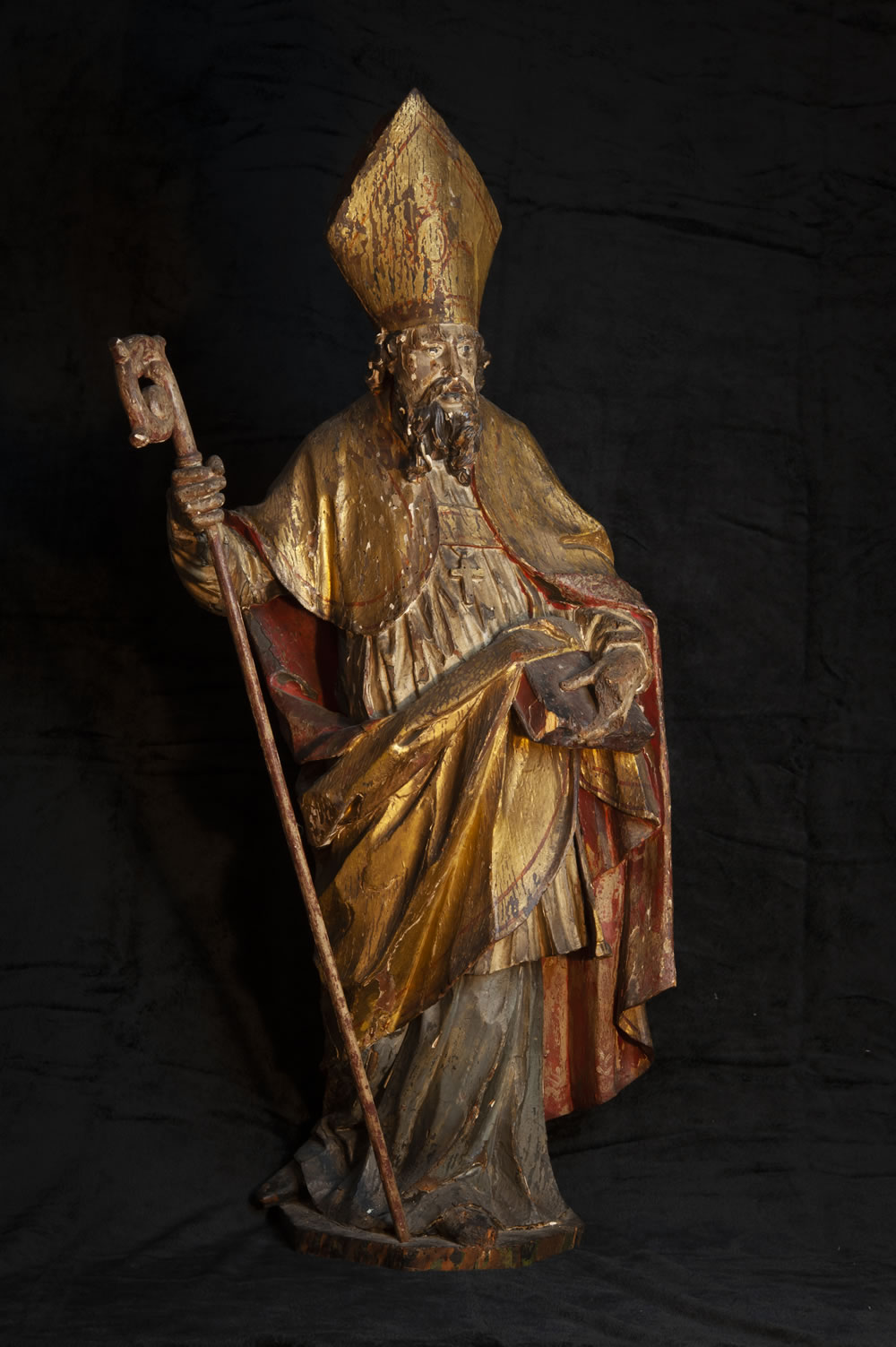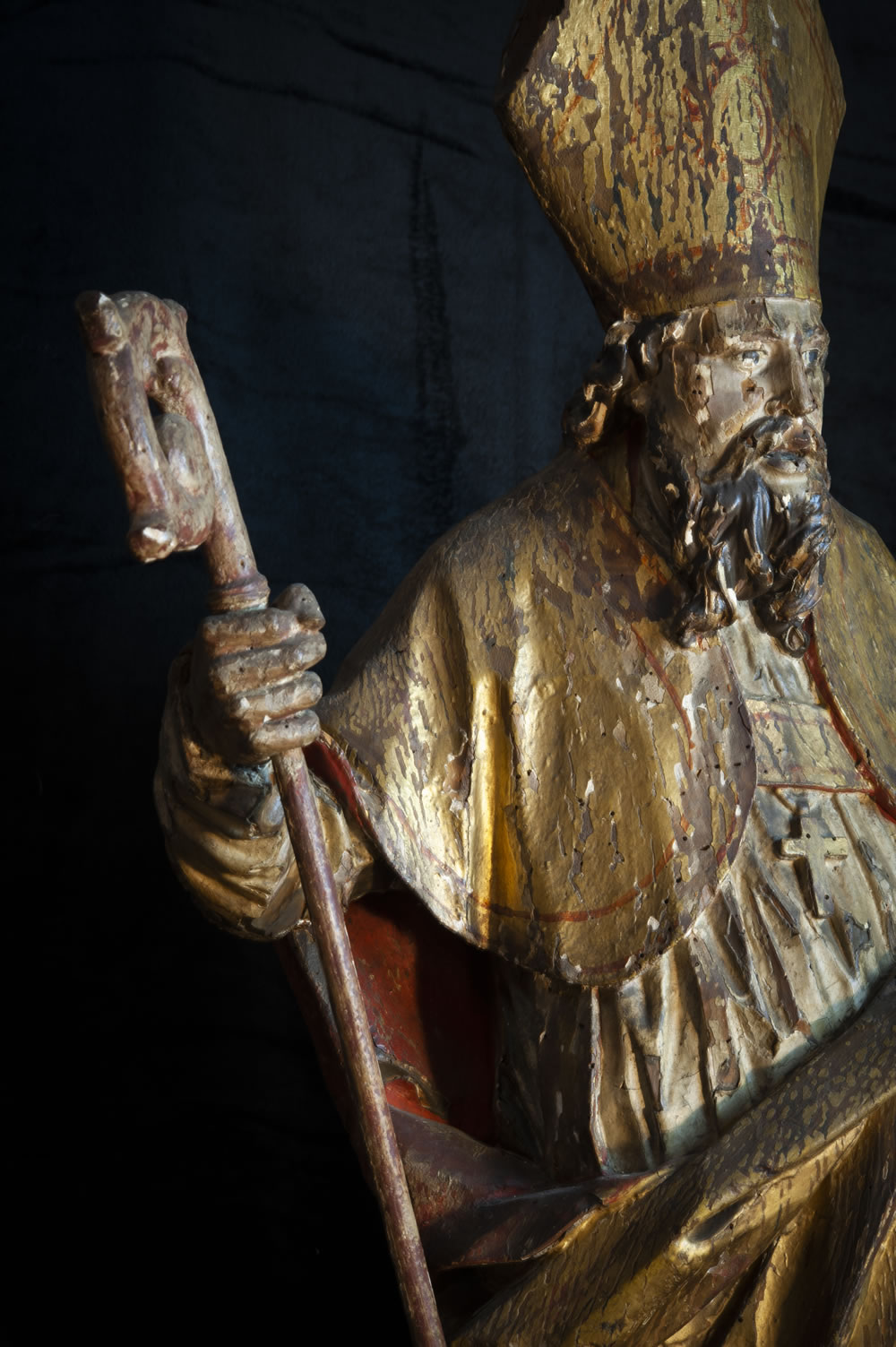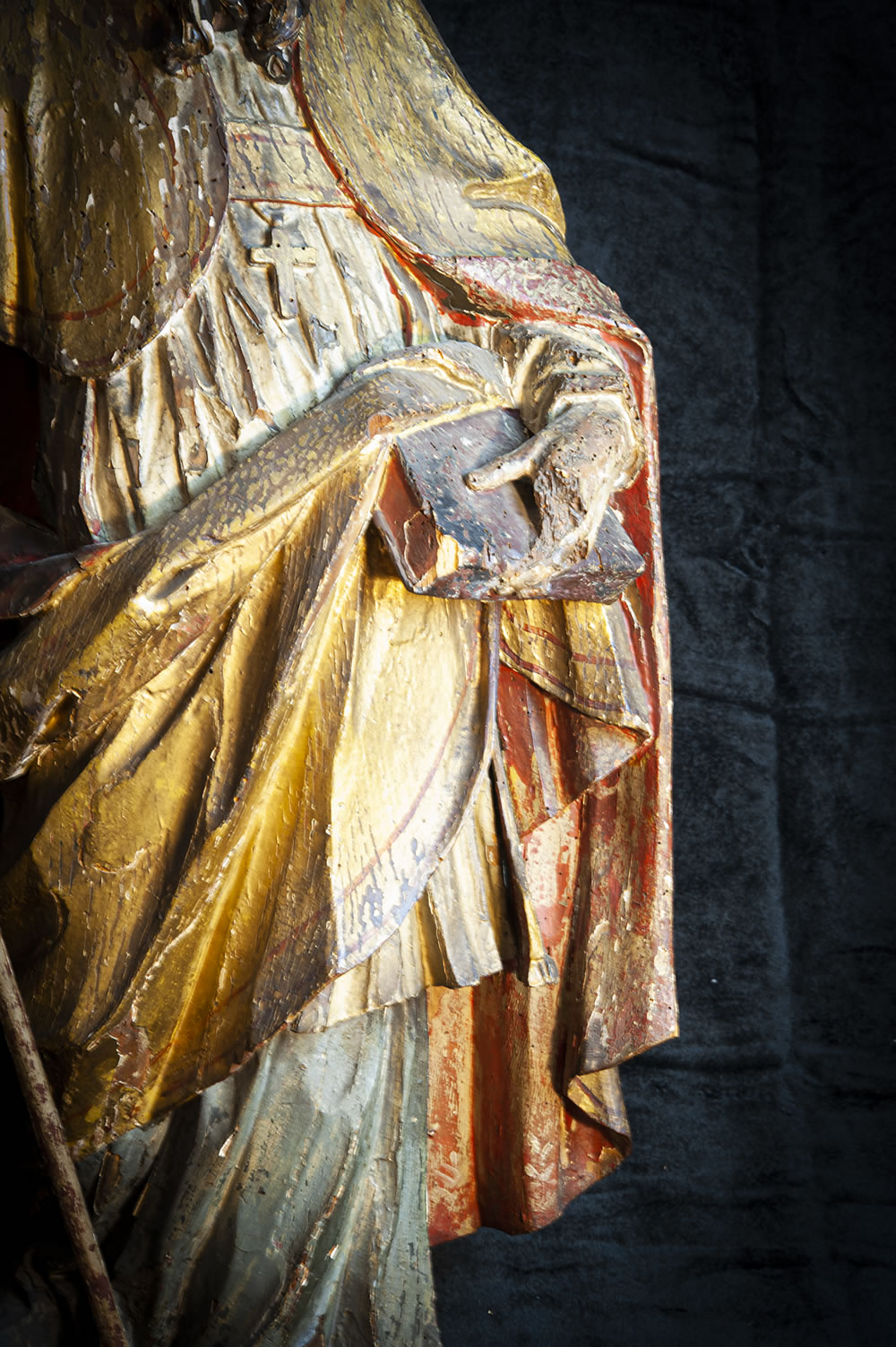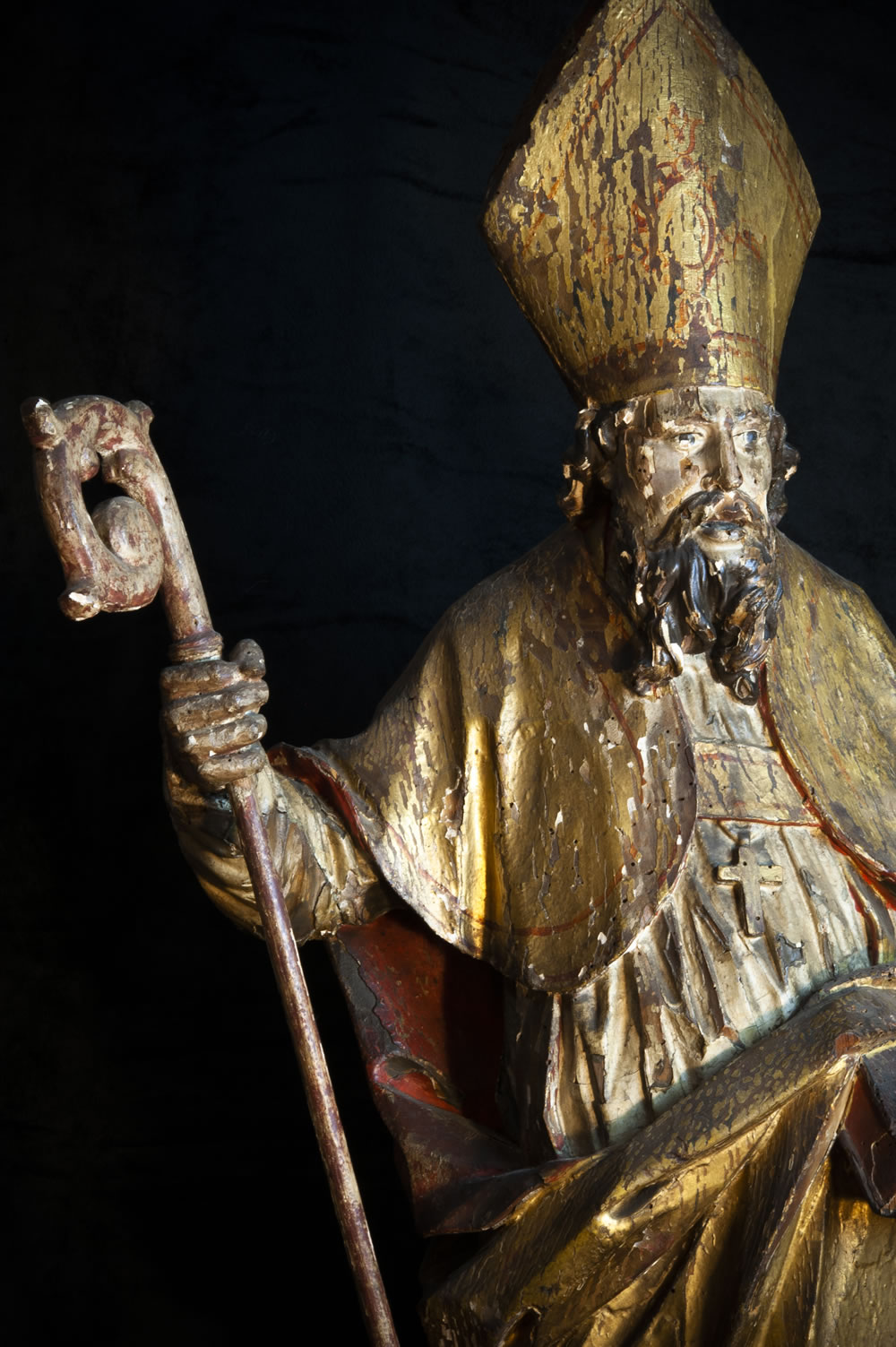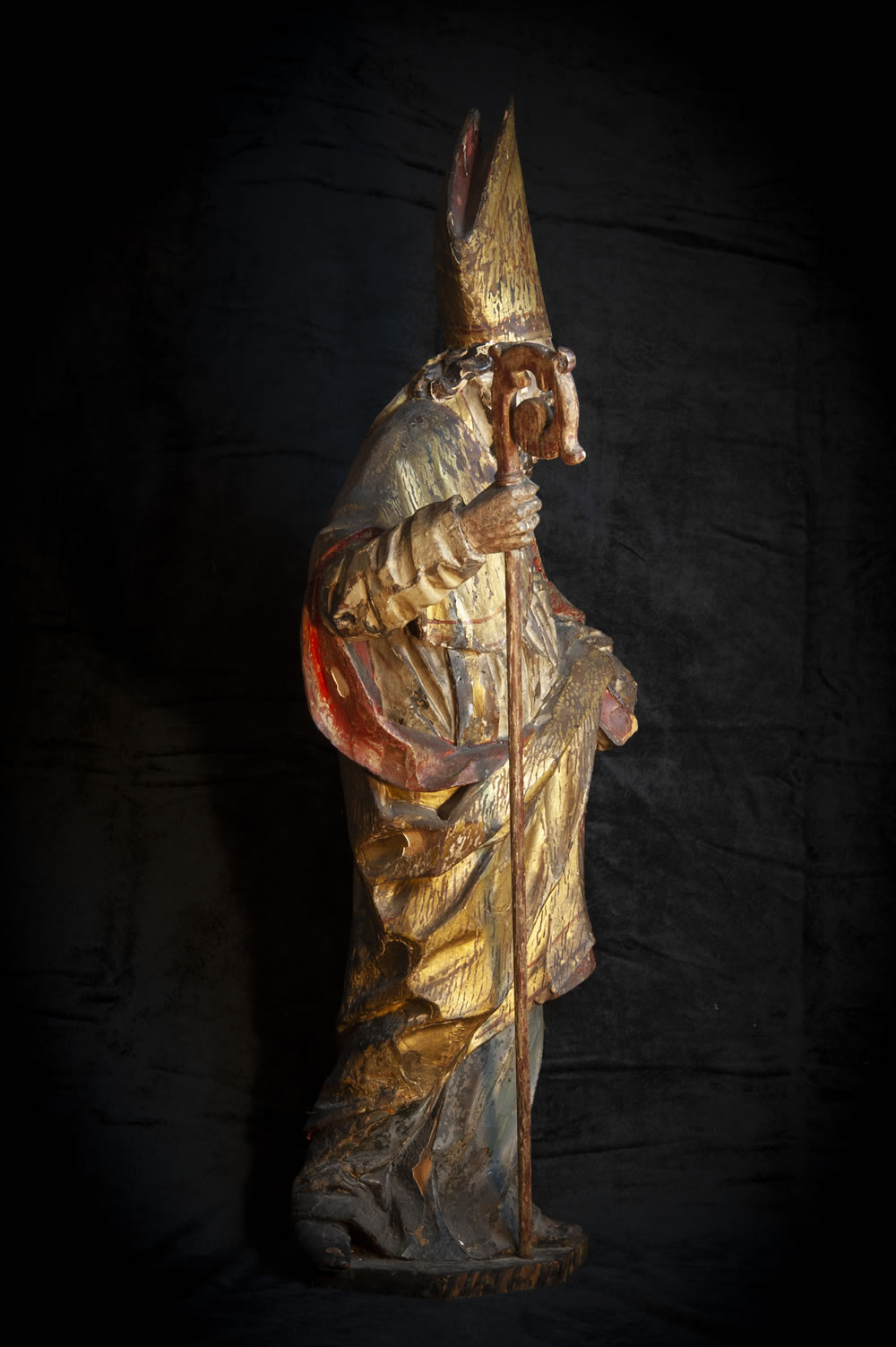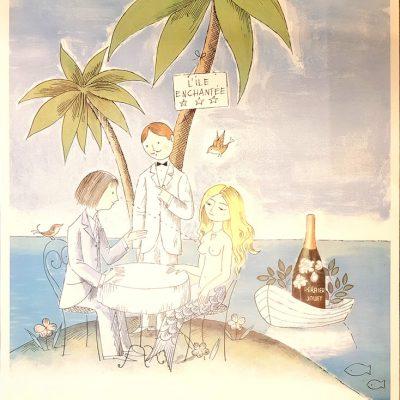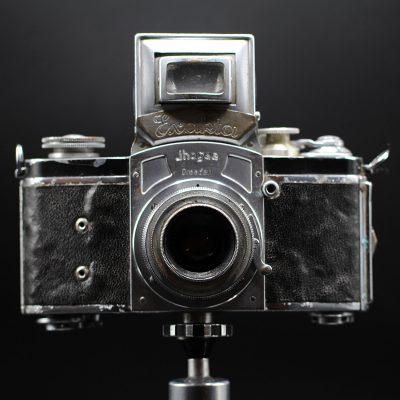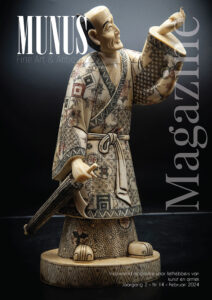Description
Beautiful statue of a bishop from the late 17th or early 18th century.
The statue is 110 cm high and retains its original polychrome. It is probably the image of Martinus van Tour as a bishop, whose image is that of Kortrijk. Kortrijk with the Sint Maartenskerk. The sculpture has a beautiful patina that reflects the period. It is very rare to find a sculpture in such complete condition.
- Condition: Much of the original polychromy has been preserved, a few fingers of the left hand holding the book are missing.
- Period: Late 17th century to early 18th century
Martin as bishop
In 371 Maarten was elected bishop by the people of Tours. According to tradition, he did not consider himself worthy of the office and hid in a goose-hutch. When his supporters went looking for him, the geese rioted, discovering his hiding place. So it was that he could still be ordained a bishop.
As a bishop, he committed himself to the further spread of Christianity. He founded churches and around 375 the famous Abbey of Marmoutier. To plead the case of one of his faithful who was in danger of being unjustly executed, he traveled to Emperor Maximus in Trier. However, this intervention was unsuccessful. Martinus also took a conciliatory attitude towards followers of other movements within Christianity, such as Arianism. Even the emperor in Rome was impressed by Martin, especially when it turned out that he was not talking to his mouth.
In 397 Maarten died of fevers. He was then about eighty years old. He was buried on 11 November in a Christian cemetery just outside the city of Tours. Worship took off soon after his death and a basilica was dedicated to him in the 7th century. In his extant grave there are only a piece of skull cap and an arm bone, the remaining bones were sold for veneration as relics. An arm bone ended up in the Dom of Utrecht.

